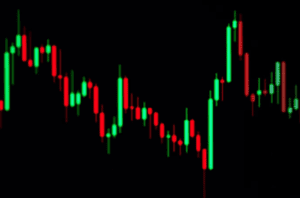Have you ever wondered how the best forex traders achieve consistent profits day after day? The secret is simple: they know how to analyse forex patterns. Spotting key patterns in price charts is what gives elite traders their edge. You may have heard terms like “head and shoulders,” “double top,” or “flag pattern” before, but do you know how to spot them and, more importantly, how to trade them? If not, don’t worry — you’re about to learn.
In this guide, we’ll dive deep into the most common forex patterns, show you real examples, and teach you strategies to profit from them. Whether you’re a newbie trader just getting started or a seasoned pro looking to gain an extra edge, analysing forex patterns is the key to trading success.
So buckle up, grab a coffee, and let’s get started. By the end of this guide, you’ll be spotting double bottoms and trading triangles like a pro.
Understanding Forex Patterns and Trends

To be a successful forex trader, you need to understand how to analyse forex patterns and identify trends. The key is recognising price trends and reversals to determine the best times to buy and sell.
1. Look for Support and Resistance Levels
Support and resistance levels show where the price is likely to stall or reverse. Support is the floor where the price tends to stop falling, while resistance is the ceiling where the price has trouble breaking through.
Monitor price charts to spot these levels. When the price approaches a support or resistance level, pay close attention. If it breaks through, it often signals a trend reversal. If it bounces off the level, the trend is likely to continue. These turning points present prime opportunities for trades.
2. Identify Trend Lines
Connect the highs or lows of price peaks to draw trend lines. An upward sloping line indicates an uptrend, while a downward sloping line shows a downtrend. Trend lines represent momentum and the prevailing direction of the market.
When the price approaches an established trend line, it usually signals that the trend is ending. Look for a break in the trend line to indicate a reversal and a chance to open a new position. Ride the new trend to profit!
3. Notice Chart Patterns
Certain patterns like triangles, wedges, and pennants recur frequently in price charts and hint at where the price might go next. For example, symmetrical triangles often indicate a trend reversal, while rising wedges usually signal an upcoming downturn.
Analysing forex patterns and trends is an art form that takes practice to master. But by understanding support, resistance, trend lines, and chart patterns, you’ll be well on your way to trading success.
Top 5 Most Common Forex Chart Patterns
Forex chart patterns can help predict price movements and spot opportunities. The top 5 most common forex chart patterns are:
1. Head and Shoulders
This pattern indicates a reversal in the trend. It contains three peaks, with the middle peak being the highest (the head) and the two outside peaks being lower (the shoulders). The neckline connects the two shoulders, and when the price breaks through the neckline, it signals a reversal.
2. Double Top
The double top pattern also signals a reversal. It consists of two peaks that are roughly the same height, with a trough in between. When the price declines below the trough, it indicates the trend may be reversing.
3. Double Bottom
The opposite of the double top, the double bottom pattern, indicates the possibility of an upward trend reversal. It consists of two troughs that are roughly the same depth, with a peak in between. When the price rises above the peak, it signals the trend may be reversing.
4. Triangle
Triangle patterns can signal either a reversal or continuation of a trend. There are three types: ascending triangles (bullish), descending triangles (bearish) and symmetrical triangles (neutral). Watch for a breakout from the triangle in the direction of the overall trend.
5. Wedges
Wedges can also signal reversals or trend continuations. Rising wedges (bearish) slope up, falling wedges (bullish) slope down. As with triangles, look for a breakout in the direction of the trend. Wedges often break out sooner than triangles.
How to Identify Reversal Patterns

One of the most important skills is identifying reversal patterns, which signal when a trend may be about to change direction. Here are some of the most common reversal patterns to look for:
Double Tops and Bottoms
Double tops and double bottoms are some of the most well-known reversal patterns. A double top forms when the price rises to a resistance level, pulls back, and then rises to the same resistance level again before reversing. A double bottom is the opposite, forming the when price drops to a support level, rallies, and then drops to the same support level again. These patterns indicate the trend is losing momentum and a reversal is likely.
Head and Shoulders
The head and shoulders pattern has a distinctive shape with three peaks, the middle peak being the highest (the head) and the two outer peaks (the shoulders) being lower and roughly equal. When price breaks below the “neckline” connecting the two shoulders, it signals a reversal from an uptrend to a downtrend. The inverse head and shoulders signals a reversal from a downtrend to an uptrend.
Triangles
Triangles form when price consolidates in a narrowing range, creating a triangular shape on the chart. The three most common are symmetrical triangles, ascending triangles, and descending triangles. When price breaks out of the triangle, it often signals a reversal of the prior trend. For example, a breakout from an ascending triangle in an uptrend may signal a reversal to a downtrend.
The key is to look for clusters of these reversal patterns at key support and resistance levels, especially on longer timeframes like the daily and weekly charts. Don’t rely on a single pattern—look for multiple patterns reinforcing the same reversal signal.
And always wait for price to actually break out of the pattern before entering a trade, since breakouts often fail.
Using Continuation Patterns to Your Advantage
Continuation patterns are one of the most useful tools for forex traders. These patterns signal that the current trend is likely to continue, allowing you to ride the momentum and maximise your profits. Here are some of the most common continuation patterns and how you can take advantage of them.
1. The Symmetrical Triangle
The symmetrical triangle pattern forms when the price consolidates between two trendlines that converge. It suggests the trend will break out and continue in the direction of the original trend. Look for volume to decrease as the pattern forms. Once the price breaks out of the triangle, enter a trade in the direction of the breakout and the original trend. Place a stop loss just outside the opposite side of the triangle.
2. The Flag
The flag pattern is a minor retracement that forms a small rectangle or parallelogram against the trend. It indicates the trend will continue with force after the brief pause. Trade flags by entering the market when the price breaks out of the flag formation. Set a tight stop loss just outside the opposite side of the flag. Flags often lead to a quick and substantial price move, so you can achieve a large reward-to-risk ratio with this pattern.
3. The Wedge
The wedge forms when the price is consolidated between two trendlines that converge. However, unlike the symmetrical triangle, the wedge pattern slants in the direction of the trend. The wedge suggests the trend may accelerate and continue strongly. Trade wedges similarly to the symmetrical triangle, entering in the direction of the breakout with a stop loss placed on the other side of the pattern.
Using continuation patterns, you can identify situations where the trend is likely to keep moving in your favour. By trading breakouts from these patterns, you put yourself in a position to profit from the momentum. Be sure to use tight stop losses in case the pattern fails, but the reward potential can be very high if you catch a strong continuation move.
Tips From the Best Forex Traders for Trading Chart Patterns

To become one of the best forex traders, you need to master the art of analysing chart patterns. Here are some tips from top traders:
1. Look for repeating patterns
The forex market moves in cycles, so look for patterns that repeat themselves. Some of the most common patterns are head and shoulders, cup and handle, double tops and bottoms. Once you spot a pattern emerging, pay close attention—there’s a good chance it will complete and provide a trading opportunity.
2. Zoom out for the bigger picture
It’s easy to get caught up in short-term price movements, but the real money is made by identifying longer-term trends. Regularly view charts on the daily and weekly timeframes to see the overall direction of the market. Look for periods of consolidation where price is ranging, as these often precede a major breakout.
3. Compare multiple timeframes
Analyse how price is moving across different time periods to get the full scope of the trend. For example, you may spot an uptrend on the daily chart, but the 4-hour is showing signs of a reversal. This could indicate a short-term pullback within the broader uptrend. Comparing timeframes helps ensure you don’t get blindsided by temporary retracements or reversals.
4. Look for confluence
The more factors that line up to support a trade, the higher the probability of success. Things like trendlines, moving averages, Fibonacci levels, and chart patterns that all point to the same outcome add confluence to your analysis. When multiple technical signals converge at the same price area, that’s a sign the market may be poised for a major move.
5. Keep records of your analysis
Review your previous trade ideas and analyses to see what you got right and wrong. Look for patterns in your thinking and use that knowledge to improve your skills. Some of the best lessons in trading come from analysing your wins and losses. The key is to be consistent in your approach so you can develop pattern recognition expertise over time.
How to Incorporate Fundamental Analysis With Pattern Recognition
Pattern recognition is key, but fundamental analysis also provides important context. By combining these techniques, you’ll gain valuable insights into price trends and be able make better trading decisions.
Follow Market News
Fundamental analysis involves studying the overall state of the economy and how it might affect currency values. Pay attention to interest rates, employment stats, GDP, trade balances, and inflation numbers. Look for coverage from reputable sources like the Wall Street Journal, Reuters, and Bloomberg.
When a country’s economic outlook is strong, its currency typically appreciates in value. The opposite is also true. Knowing which direction major currencies are moving can help you spot patterns that signal trading opportunities.
Watch for Familiar Patterns
Once you understand the fundamentals, start looking for familiar price patterns like triangles, head and shoulders, double tops and bottoms, and trend lines. These patterns often signal reversals or continuations in the market. For example, an ascending triangle is a bullish pattern that indicates an upward breakout, while a head and shoulders top signals a potential downtrend.
The more you practice pattern recognition, the easier it will be to spot these formations. Many traders use price charts, especially candlestick charts, to monitor patterns. Look for patterns forming over multiple time frames, from 1-hour charts all the way up to daily and weekly charts. The larger the pattern, the more significant the potential price move.
Putting It All Together
Combining fundamental analysis with pattern recognition gives you a more complete view of the market. Fundamentals help determine the overall trend direction and pattern recognition helps determine specific entry and exit points. For example, if strong economic data suggests currency appreciation and you spot an ascending triangle, that could signal an opportunity to buy at the breakout.
By incorporating both techniques into your trading, you’ll gain valuable insights that other traders may miss. With regular practice analysing fundamentals and recognising patterns, you’ll be well on your way to trading success. The keys are knowing what signs to look for and having the patience to wait for the right opportunities.
Why Choose Online Trading Courses to Master Forex Chart Patterns
Online trading courses offered by Financial Markets Online are one of the best ways to learn forex chart patterns and become a skilled forex trader. These interactive courses teach you everything from the basics to advanced strategies through video lessons, quizzes, and live webinars. You get guidance from expert traders who can mentor you as you learn.
Learn at Your Own Pace
The great thing about online trading courses is you can learn on your own schedule. Whether you want to study for a few hours each day or just review some lessons on the weekends, you control the pace. You have lifetime access to course materials, so you can always go back and re-watch lessons or revisit topics you find challenging.
Get Hands-On Experience
Many of the top courses offer demo accounts where you can practice what you’re learning with fake money. This allows you to gain experience analysing charts, identifying patterns, and executing trades without risking your hard-earned cash. By the time you start trading for real, you’ll have confidence in your abilities.
Stay Up-to-Date with the Latest Tools and Strategies
The forex market is always evolving, so the trading techniques and tools that work today may be outdated tomorrow. Online trading courses are frequently updated to reflect the latest trends, indicators, and strategies top traders are using. You’ll get familiar with the most advanced trading platforms and technical analysis software to make the most informed trading decisions.
Get Guidance from Industry Experts
In a good online course, you learn from traders who have years of experience and a proven track record of success. They share their insights, strategies, mistakes, and tips to help set you on the path to becoming a expert trader yourself. Many even offer one-on-one mentoring and consulting to provide tailored guidance for your needs.
While online trading courses require an investment of both time and money, they are one of the most effective ways to learn forex chart patterns and how to trade profitably. The skills and knowledge you gain will serve you well for years to come as you embark on your trading journey.
Final Thoughts
So there you have it, the keys to unlocking the mysteries behind forex patterns and using them to your advantage. While it may seem complex, with regular practice analysing charts and spotting trends will become second nature. The rewards of getting it right can be huge. Remember, start small and don’t risk more than you can afford to lose as you learn the ropes.
With time and experience, you’ll develop an instinct for which patterns are signaling an opportunity and which are false alarms. You’ll build confidence in your ability to read the market and know when to make your move. The journey may not always be smooth but stay determined and consistent. Keep learning from your mistakes and successes.
Before you know it, you’ll be well on your way to becoming one of the best forex traders. The patterns will unveil their secrets, and a whole new world of possibilities will open up before you. You’ve got this! Now get out there, trust your analysis, and start trading with the pros. The markets are waiting.
FAQs
1. What exactly are Forex patterns?
Forex patterns, also known as price action patterns, are recurring price movements that provide trading signals. Things like double tops, head and shoulders, triangles, flags, and wedges. Mastering pattern recognition is key to successful Forex trading.
2. What are the most reliable Forex patterns?
Some of the most reliable patterns are:
- Double tops and bottoms: These signal a reversal in trend. Look for two peaks or troughs at roughly the same price level.
- Head and shoulders: Another reversal pattern with a head (highest peak) flanked by two shoulders (lower peaks). Indicates the trend is changing.
- Triangles: Consolidation patterns that signal a continuation of the trend. Look for higher lows and lower highs converging into a narrowing price range.
- Flags and pennants: Brief pauses in a trending market. Typically the trend will continue in the same direction once the pattern completes.
3. How do I spot Forex patterns?
The keys to spotting Forex patterns are:
- Look at longer time frames like daily and weekly charts. Patterns are more visible and reliable on these charts.
- Look for obvious shapes that stand out. Double tops, head and shoulders, triangles, etc. The pattern should be symmetrical and distinct.
- Measure precisely. Note specific price levels, the height and width of the pattern, trendlines, etc. Precise measurements confirm if a pattern is valid.
- Consider volume. Volume often declines within the pattern and then spikes once the pattern completes. This confirms the pattern and signals a breakout.
- Look for a breakout. A break outside of the pattern signals the trend may continue.
- Watch for increasing volume on the breakout for confirmation.
- Combine patterns with other technical indicators for validation. Oscillators, moving averages, Fibonacci levels, etc. Multiple signals give more confidence.
4. How can Forex patterns improve my trading?
Mastering Forex pattern recognition can help improve your trading in several ways:
- Provide high probability trading signals so you know when to enter and exit a trade.
- Give you an edge to anticipate future price movements and market reversals.
- Help determine appropriate stop loss and profit target levels.
- Improve your timing by spotting the completion of patterns and breakouts early.
- Provide a trading plan or system to follow based on the patterns you spot.



